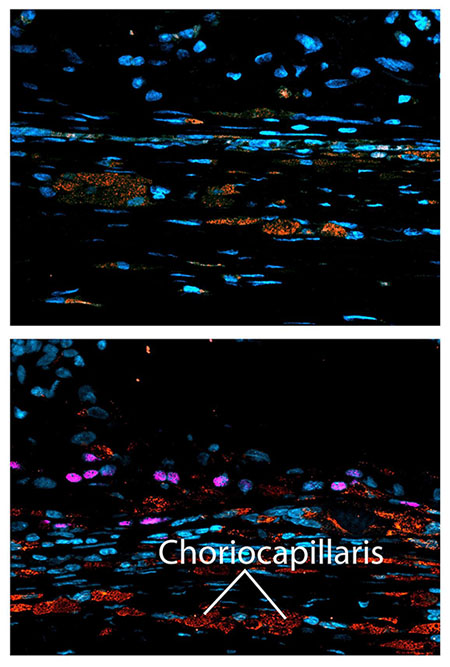NIH scientists test in an animal model a surgical technique to improve cell therapy for dry AMD
The technique may enable higher doses and combinations of cell therapies
National Institutes of Health (NIH) scientists have developed a new surgical technique for implanting multiple tissue grafts in the eye's retina. The findings in animals may help advance treatment options for dry age-related macular degeneration (AMD), which is a leading cause of vision loss among older Americans. A report about the technique published today in JCI Insight.
In diseases such as AMD, the light-sensitive retina tissue at the back of the eye degenerates. Scientists are testing therapies for restoring damaged retinas with grafts of tissue grown in the lab from patient-derived stem cells. Until now, surgeons have only been able to place one graft in the retina, limiting the area that can be treated in patients, and as well as the ability to conduct side-by-side comparisons in animal models. Such comparisons are crucial for confirming that the tissue grafts are integrating with the retina and the underlying blood supply from a network of tiny blood vessels known as the choriocapillaris.
For the technique, investigators designed a new surgical clamp that maintains eye pressure during the insertion of two tissue patches in immediate succession while minimizing damage to the surrounding tissue.

Top image shows the scaffold-only, which served as a control. Bottom image shows how the scaffold with RPE regenerated the choriocapillaris (labeled red), the part of the eye that supplies the retina with oxygen and nutrients.
This page was last updated on Thursday, May 22, 2025